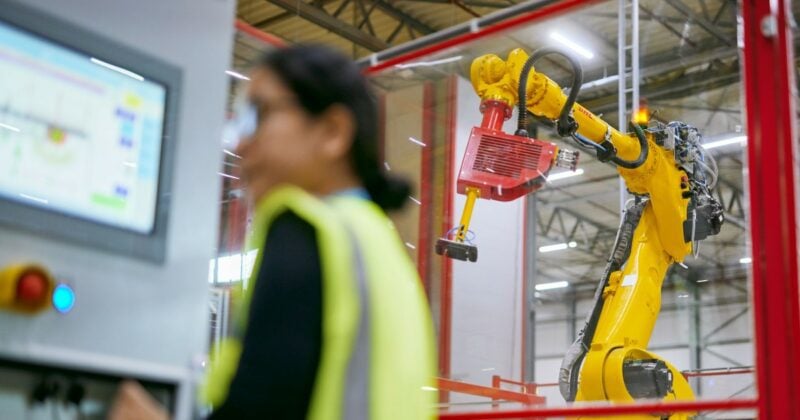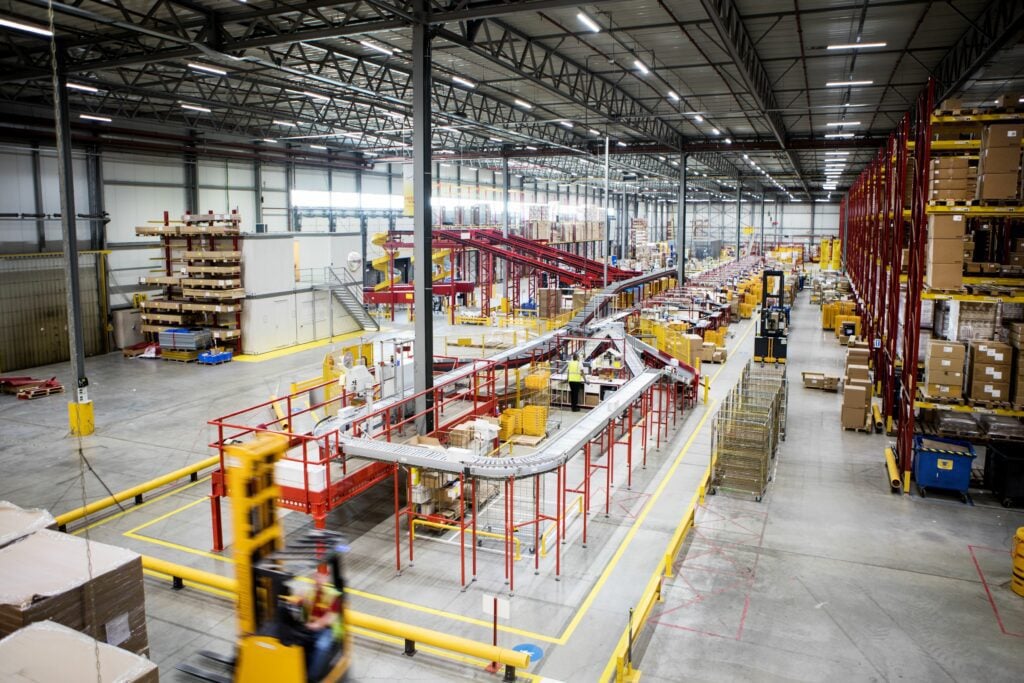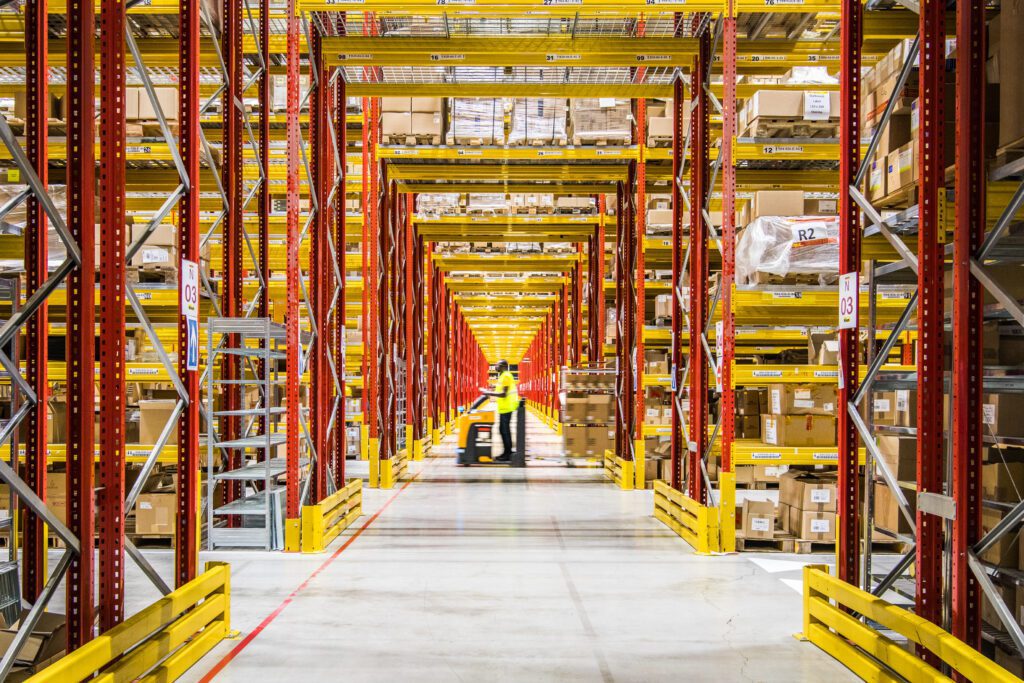澳大利亚电子商务公司通过仓储自动化获得推动力

疫情爆发后,全球复杂新常态的一个标志是电子商务数量激增。澳大利亚也不例外。
研究表明,由于需要保持社交距离,加上边境关闭和管控,2021年澳大利亚的电子商务支出达到490亿美元(490亿欧元),高于2020年的380亿美元。 目前,约四分之三澳大利亚企业的部分收入来自网上销售。在线商务占澳大利亚零售贸易总额的10%。
对于澳大利亚的许多B2C公司来说,这种转变凸显了对更高效的仓库运营的需求。在赢得客户的竞争中,加快网上交货的处理时间变得至关重要:根据普华永道的数据,17%的网上购物者如果面临漫长的交货时间,就会放弃某个品牌。
作为回应,越来越多的澳大利亚公司在其仓库中采用新的数字技术、自动化和机器人技术解决方案,以帮助他们缩短交货时间,为客户提供更快、更灵活的交货选择。
但这些技术是如何运作的?它们是如何帮助公司提高生产力的?它们能否在竞争日益激烈的电子商务环境中,降低仓库成为潜在瓶颈的风险?
实现自动化以满足日益增长的客户需求
当网上购物者点击网站上的“购买”按钮时,他们就启动了一个复杂的供应链。对于电子零售商的仓库或配送中心来说,这包括劳动密集的拣选过程,即在一个充满数十万种产品的巨大空间中找到特定的商品。
接下来的步骤包括准备好要装运的物品。这可能包括包装,将订单分类放入播种墙系统,然后将物品放到传送带上。
用于识别和命名仓库内所有产品货架位置、工作区域和行进路径的高效位置映射是确保站点能够最佳运行的关键,将物品存放在正确位置的系统也是如此。
虽然可穿戴设备可以帮助管理人员追踪员工在现场的活动情况,但所有这些步骤所涉及的人力劳动可能非常耗时,甚至十分挑战体力。相比之下,使用智能软件和先进机器人技术的智能仓库可以使许多流程自动化,节省时间并减少人为错误。
这还可以让成本底线直接受益:研究表明,对于电子商务运营而言,自动化可以使每平方英尺物流空间的收入增加10%到20%。
自动化如何提高仓库生产力
几十年来,澳大利亚的物流部门一直在部署自动导引车等解决方案。但在过去几年里,自动驾驶技术的创新以及新的灵活的拣选和操作系统正在改变机器人和自动化在室内和室外环境中的应用。
机器人系统正变得越来越容易部署,系统由机器学习和强大的传感器驱动,使它们能够快速适应不断变化的环境,并与物流团队一起安全工作。
以自主移动机器人(AMRs)为例。一旦拣货站的工作人员在电脑屏幕上确认了他们的拣货,这些小巧灵活的机器人就会从移动货架上取回物品,并将其送到拣货站。在地理导航技术的支持下,AMR在仓库通道中穿梭于拣货车时,计算出最佳导航路线,所需的时间比拣货人员在空间内走动要少得多。
AMR也被广泛应用于帮助工作人员清洁设施地板,清点库存,并映射和监视财产。
部署AMR的目的是为了提升物流业现有的劳动力,并为其提供新的机会。DHL供应链而所关注的不仅仅是对机器人技术的投资。
“这些解决方案还将大大减少我们员工在常规工作或搬运重物等体力劳动的时间。这样的解决方案使他们有机会发展技能,以促进他们的职业发展,并从事有意义和有趣的项目,”DHL供应链澳大利亚和新西兰首席执行官Steve Thompsett说。为了配合技术升级,该公司还将在未来两年增加其在澳大利亚的员工数量,同时为现有员工提供再培训和发展机会。
加入竞争以保持竞争力
澳大利亚领先的在线零售商已经开始利用这些创新。例如,在线书店Booktopia在2021年底投入450万澳元的机器人技术后,计划将库存增加25%,并缩短交货时间。
据《澳大利亚金融评论报》报道,Booktopia联合创始人兼首席执行官Tony Nash说,这种机器人“书架堆垛机”可以把书堆到4米高的书架上,这将使这家电子零售商在悉尼Lidcombe仓库的库存增加20万至100万册。
其他企业在建设新设施时也在大规模采用自动化技术,而不是零星地引进。以电子零售商Kogan.com为例,该公司目前拥有15个第三方运营的仓库。据报道,该公司正在寻找一个场地来建立自己的自动化设施,以扩大其现有的分销业务。
与此同时,大型连锁超市伍尔沃斯(Woolworths)宣布计划在悉尼西部的摩尔班克物流园(Moorebank Logistics Park)建造两个新的自动化仓库,预计将于2024年启用。这些中心将部署分拣机器人,并为各个商店的特定通道构建定制的托盘,帮助加快补货速度。
Coles还在墨尔本和悉尼开发两个数据驱动的配送中心,计划于2022年晚些时候开放。该公司计划使用英国连锁超市Ocado开发的软件。Ocado没有商店,只有仓库。
随着越来越多的公司效仿,对移动机器人技术的需求预计将会增长,也就不足为奇了:一些专家预测,到2026年,全球每年可能需要100万个用于仓库自动化的移动机器人。
“当然,不仅仅是大型组织能够受益于颠覆性的灵活性、速度和货对人自动化的性能,”Ryan指出。“中小企业也有很大的机会抢在那些可能致力于僵化固定自动化系统的大型零售商前面。”
引领智能仓储之路
但实际操作时是怎样的呢?在DHL,自动化和机器人技术的优势在其位于荷兰Beringe的智能仓库中得到了最为突出的展示。
Beringe仓库占地面积12.8万平方米,拥有100个装货码头,每天可停靠250辆进出港卡车。但是,这里的操作变得真正“智能”的地方是机器开始工作的时候。
例如,AMR与工作人员一起工作,以改善现有流程或创造新的流程。由于AMR帮助执行分拣任务并将货物运走,人们可以减少在仓库走动的时间。
同时,仓库配备了机器人分拣单元,固定式机器人利用机器视觉技术处理分拣任务。每个机器人都能识别各种形状和尺寸的包裹,每小时可拣选600件物品,每天24小时不间断。无线跟踪技术也是为了帮助优化设备和人员在仓库中的走动。
“从长远来看,我们正在为我们的澳大利亚仓库设置的自动化流程,以及为我们的员工提供的培训和认证机会,可以帮助他们专注于完成那些最好由人类完成的更复杂的仓库任务,”Ryan说。












 简体中文
简体中文